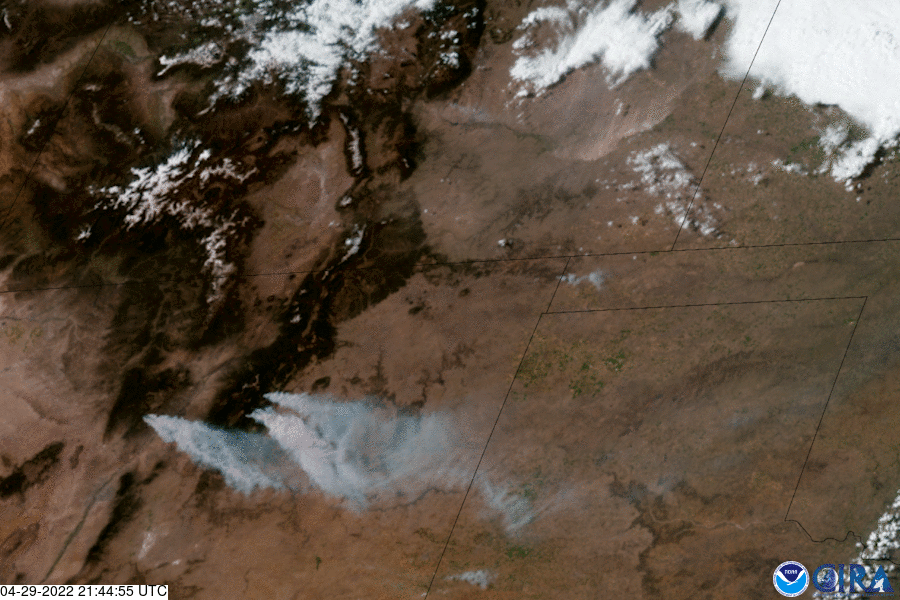Natural Sources of Air Pollution Basic

GOES-16 satellite imagery shows a dust storm charging south from the Colorado Plains as wildfires burn in New Mexico and produce large smoke plumes. Imagery courtesy the Cooperative Institute for Research in the Atmosphere at Colorado State University and the National Oceanic and Atmospheric Administration (CSU/CIRA & NOAA).
Reading Guide
Air pollutants can be emitted by natural sources aside from any human sources such as industry and automobiles. Generally, concentrations of pollutants from natural sources are low enough to not cause adverse effects to health or welfare, nor contribute significantly to exceedances of ambient air quality standards. However, there are instances when this is not the case.
Examples of natural sources of air pollution that can at times cause high concentrations are described below.
Wildfires
Wildfires emit large amounts of air particulate (PM2.5, PM10, smoke) and other species that can loft high in the atmosphere and be spread over large regions.
Windblown Dust
Large windblown dust storms (“haboobs”) occur in many arid regions of the world, ejecting course particulate airborne over large regions. This is particularly dangerous in areas where the dust contains the Coccidioides fungus, which can cause the serious chronic disease Coccidioidomycosis (“valley fever”) when inhaled.
Radioactive Gases from the Subsurface
Radon gas is formed from the decay of radioactive elements in geologic bedrock in certain areas, which can penetrate to the indoor environment through basements.
Volcanoes
Major volcanic eruptions can transport sulfur gases and ash over large regions and across the globe.
Anaerobic Biogenic Decay
Concentrations of dangerous sulfur and nitrogen gases can build up underground in confined spaces or outdoor areas where oxygen depleted decay of organic matter occurs (swamps, bogs). A particular harmful gas in this situation in hydrogen sulfide.
Tropospheric Ozone
A small amount of ozone gas, around 10 ppb, naturally forms in the troposphere. In some instances, however, concentrations can be large enough to contribute to exceedances of ambient air ground-level ozone standards.
The links listed under Further Reading summarize these issues in more detail.
Further Reading
Guide prepared by F. Freedman (02/2024). For corrections or expansions please contact us.